- Advertised capacity: 64GB
- Fake/skimpy flash: Skimpy (2.26% skimp)
- Protected area: 134,217,728 bytes
- Speed class markings: Class 10, U3, V30, A1
- CID data:
- Manufacturer ID:
0x6f - OEM ID:
0x0303 - Product name:
0x5344414243(ASCII:SDABC) - Product revision:
0x10
- Manufacturer ID:
| Sample # | 1 | 2 | 3 | Average |
|---|---|---|---|---|
| Obtained from | AliExpress | AliExpress | AliExpress | N/A |
| Logical capacity | 62,552,276,992 bytes | 62,544,412,672 bytes | 62,544,412,672 bytes | 62,547,034,112 bytes |
| Physical capacity | 62,552,276,992 bytes | 62,544,412,672 bytes | 62,544,412,672 bytes | 62,547,034,112 bytes |
| Fake/skimpy flash | Skimpy (2.26% skimp) | Skimpy (2.27% skimp) | Skimpy (2.27% skimp) | N/A |
| Adjusted skimp | 2.05% | 2.06% | 2.06% | 2.06% |
| Price paid | $4.16 | $1.79 | $1.79 | $2.58 |
| Manufacture date | Feb 2023 | Jun 2023 | Jun 2023 | N/A |
| Serial number | 0xaa000c38 | 0xaa000aeb | 0xaa0002fb | N/A |
| Sequential read speed (MB/sec) | 51.79 | 89.87 | 89.60 | 77.09 |
| Sequential write speed (MB/sec) | 34.63 | 39.32 | 36.85 | 36.93 |
| Random read speed (IOPS/sec) | 2,559.74 | 1,872.58 | 1,814.41 | 2,082.24 |
| Random write speed (IOPS/sec) | 554.12 | 471.09 | 452.61 | 492.61 |
| Read/write cycles to first error | 2,518 | 219 | 728 | 1,155 |
| Read/write cycles to complete failure | 4,240 | Not yet determined | Not yet determined | 4,240 |
| Total days to complete failure | 239 | Not yet determined | Not yet determined | 239 |
| Card reader used | SmartQ Duo | JJS CR-UTC4AC | JJS CR-UTC4AC | N/A |
| Package front | 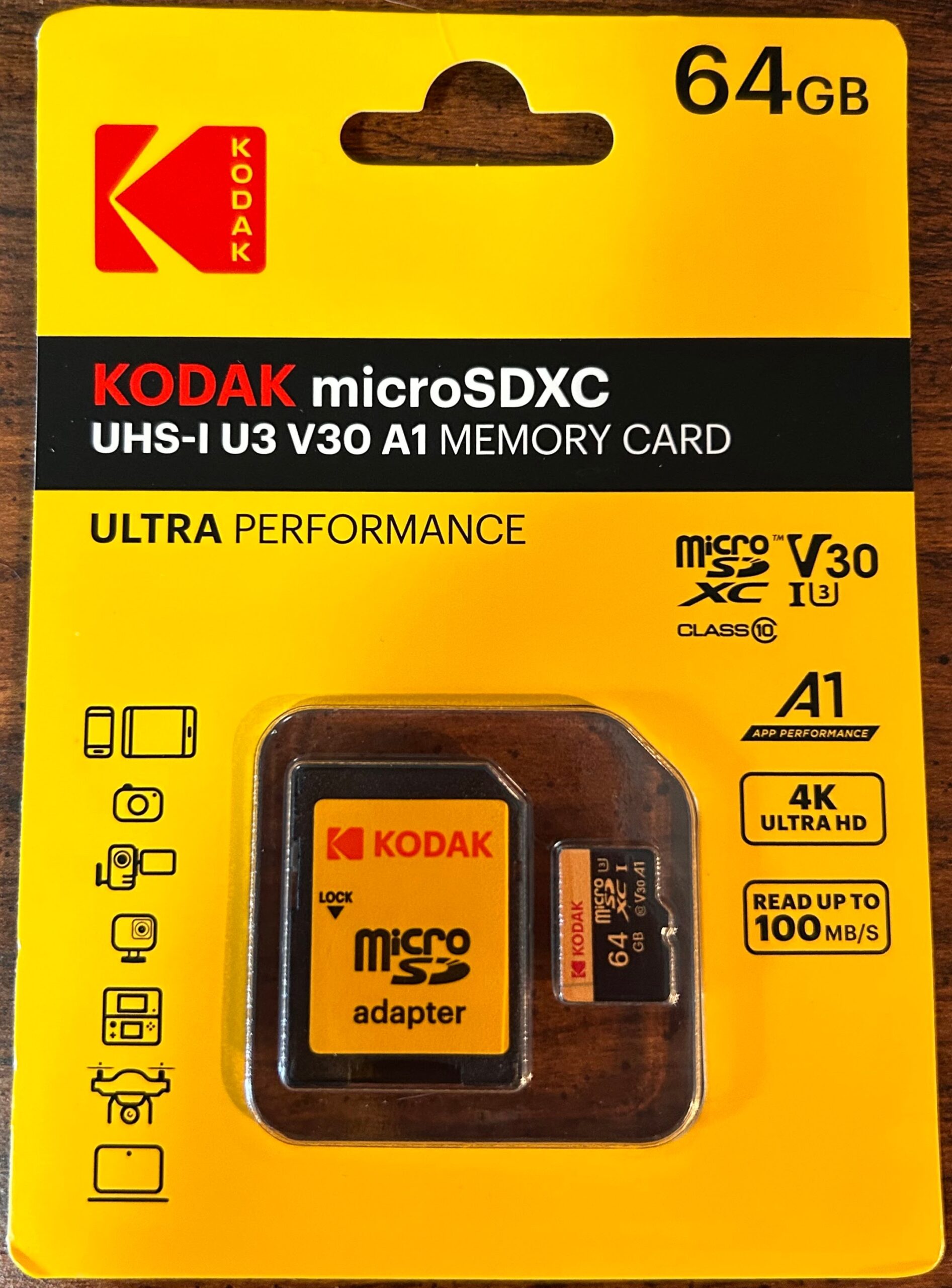 | 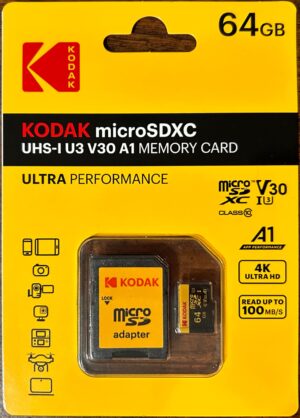 | 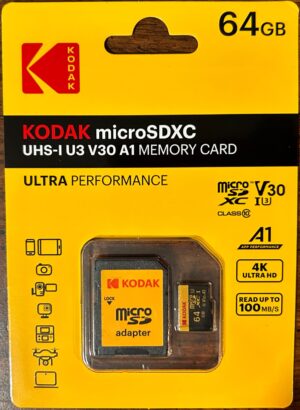 | N/A |
| Package back | 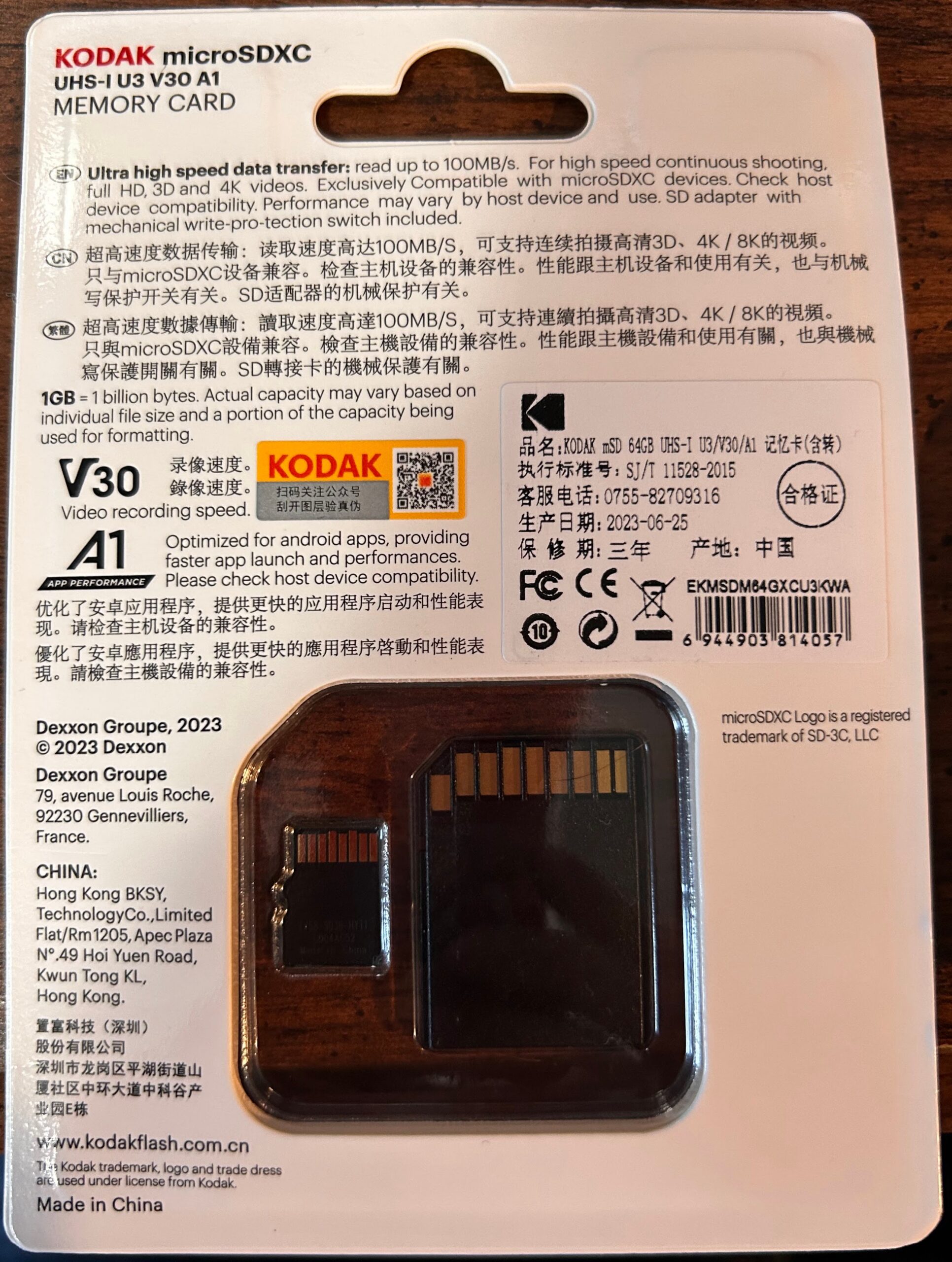 | 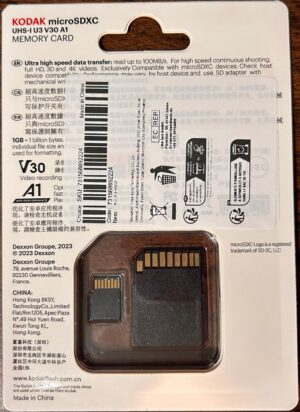 | 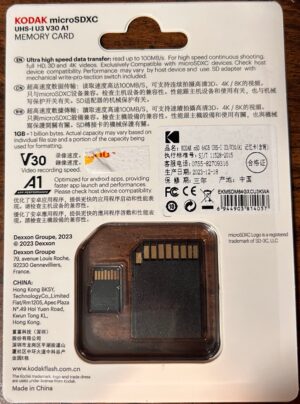 | N/A |
| Card front | 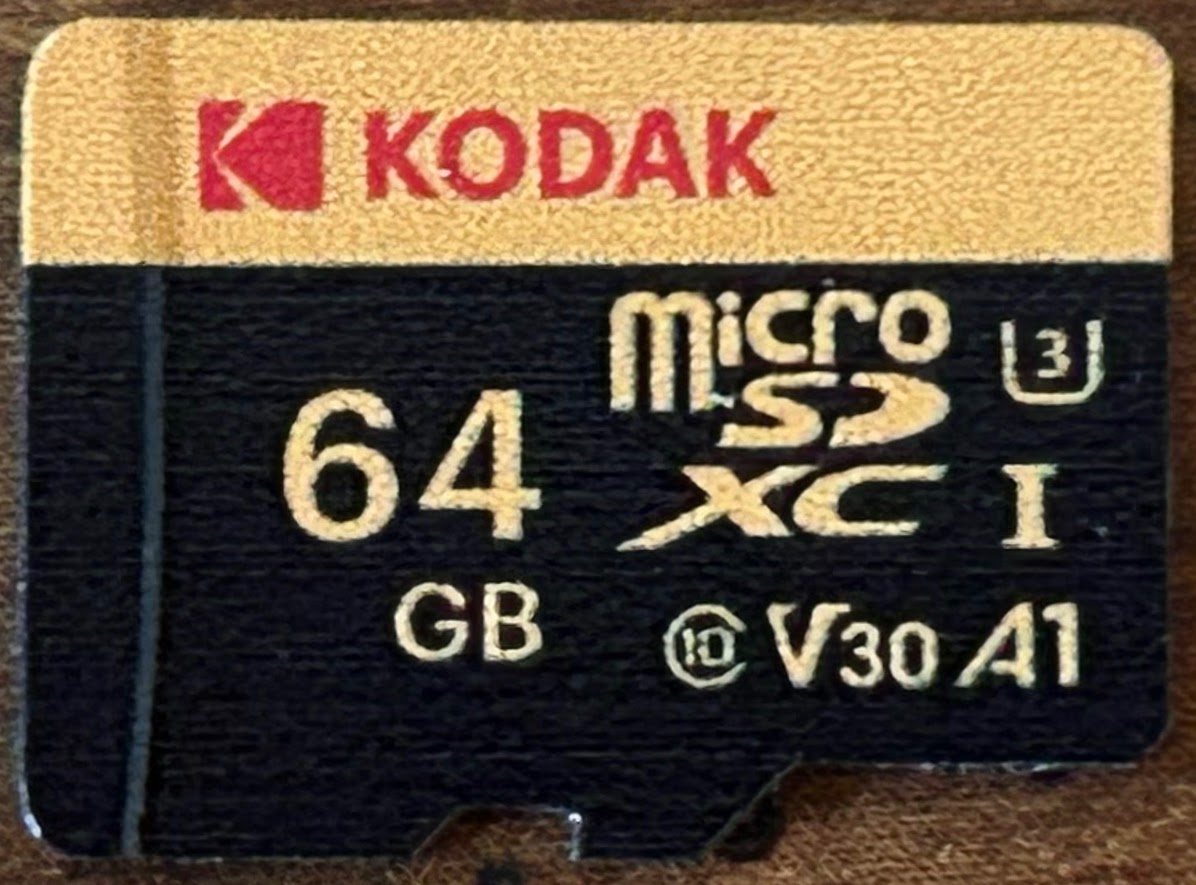 | 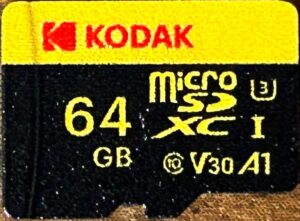 | 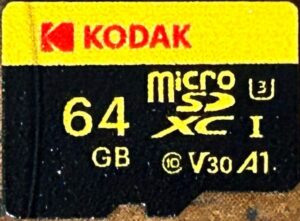 | N/A |
| Card back | 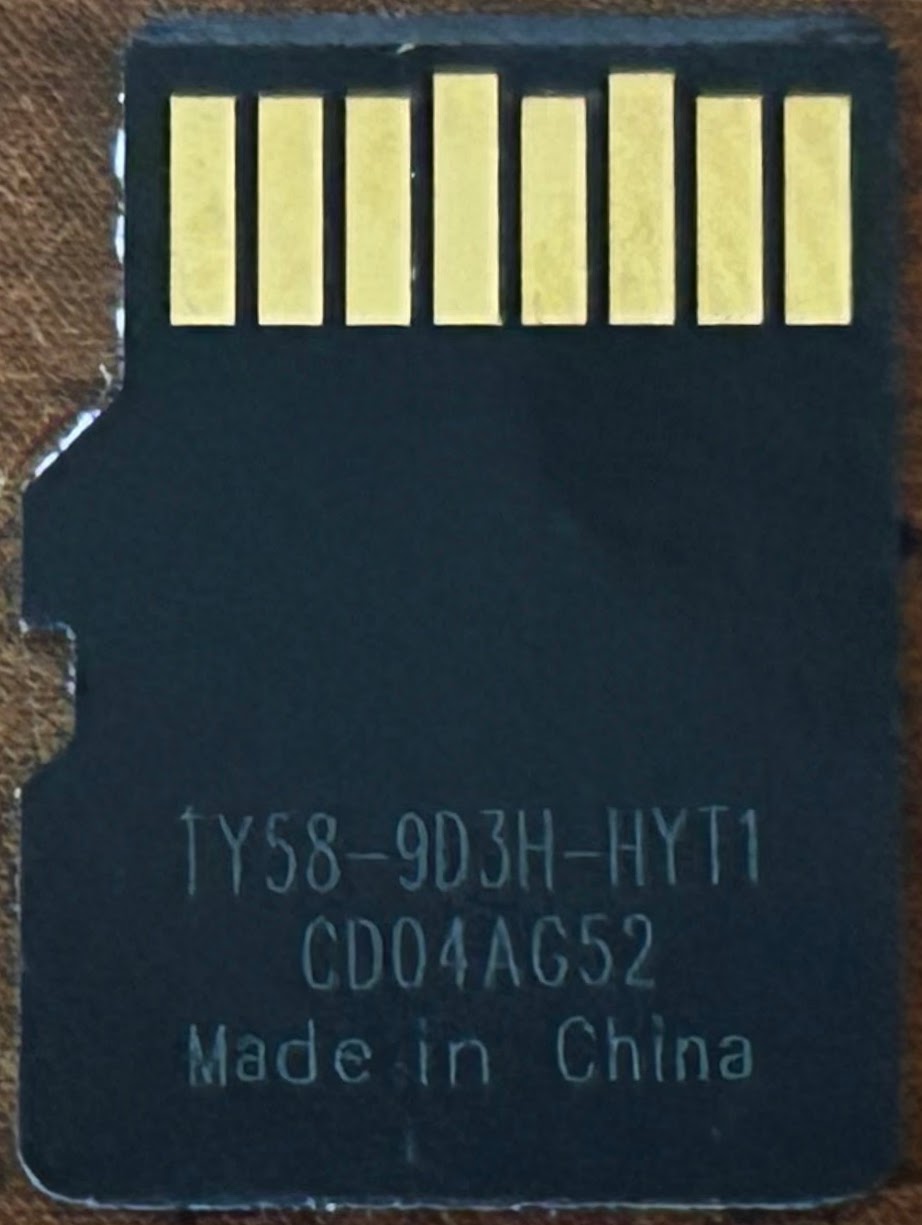 | 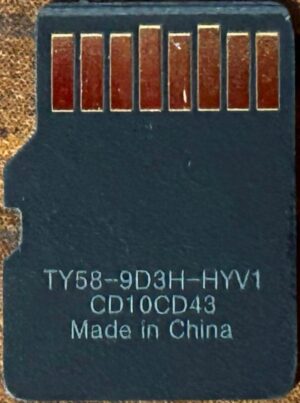 | 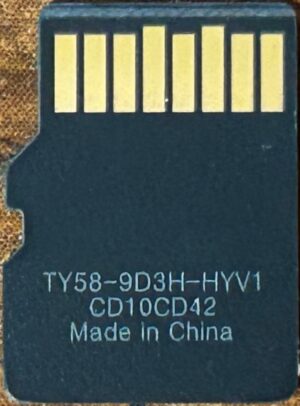 | N/A |
Discussion
I believe that I found this item as a result of recommendations that AliExpress made while I was looking at the Kodak Ultra Performance 32GB card above. Curiously, they were being sold by different sellers — sample #1 of the 32GB card was being sold by “Kodak Store”, while sample #1 of the 64GB card was being sold by “Kodak Global Store”. As I noted above, the two versions also have different manufacturer IDs; however, I’m not convinced that these two facts are related to each other. Additionally, astute readers will note that sample #1 was actually cheaper than sample #1 of the 32GB version. This card was sold with free shipping, while the 32GB card was not; however, even before shipping costs, the 64GB card was still cheaper — as I paid $4.16 for it, and $5.00 for the 32GB version (before shipping). This price was still above what I wanted to pay at the time, however, so I initially only ordered one of them. (I later decided that I should try to have at least three of each model, and I managed to get them through one of AliExpress’s sales.)
Sequential read speeds on sample #1 was disappointing, but samples #2 and #3 were able to make up for it. All other performance metrics were above average for all three samples, with random read speeds for sample #1 being more than one standard deviation above average. Sample #1 met the requirements for all of the speed class markings that it bore; however, samples #2 and #3 fell short of the 500 random write operations per second needed to qualify for the A1 marking. They got close enough, however, that my standard disclaimer of “these cards may have done better had they been tested under proper conditions” might actually be true.
On the endurance front, sample #1 made it past the 2,000 read/write cycle mark without errors. It experienced its first error during round 2,518.* It also experienced a couple of bit-flip errors affecting two sectors during round 3,903. It finally started experiencing a large number of data loss errors starting in round 4,215; by the end of round 4,241, those errors had affected over 50% of the sectors on the device.
The graph for this card looks pretty boring — but nevertheless, here it is:
Samples #2’s first error was a four-sector wide address decoding error during round 219. It has survived 1,784 read/write cycles in total so far.
Sample #3’s first error was a four-sector wide address decoding error that occurred during round 729. It has also survived 1,784 read/write cycles so far.
* This error may have been related to the fact that I pulled it from its reader during testing so that I could read the registers off of it with the Realtek reader. However, my program was well into the readback portion of the round when I pulled it — and section 4.3.3 of the SD Physical Layer Specification says that “[t]he read operation from SD memory card may be interrupted by turning the power off. The SD Memory Card ensures that data is not destroyed during all the conditions except write or erase operations issued by the host even in the event of sudden shut down or removal.” Given that my program was only issuing read operations, any data in the card’s cache should have long since been written out to flash. Regardless, the symptoms do seem to be consistent with a cached write that was only partially flushed.
June 15, 2024 (current number of read/write cycles is updated automatically every hour)

